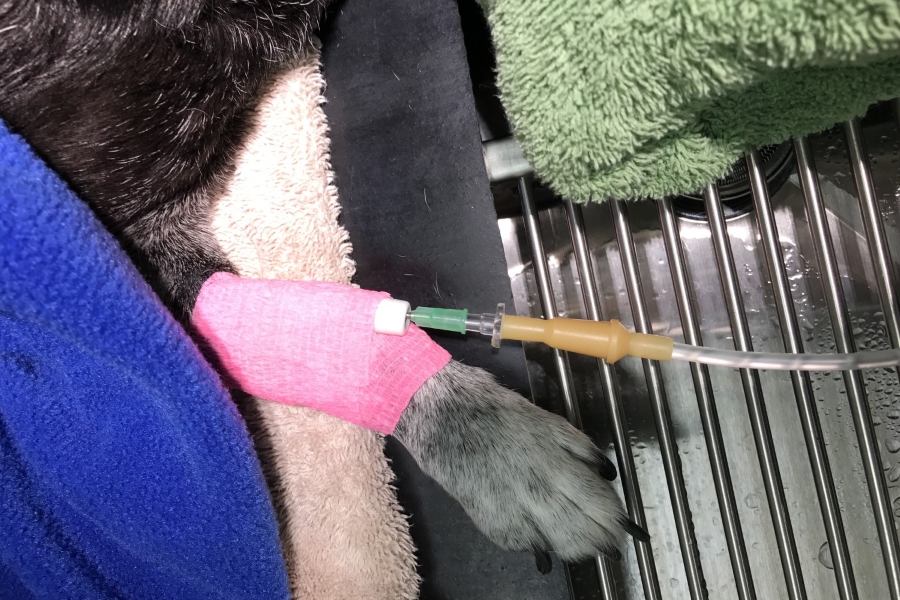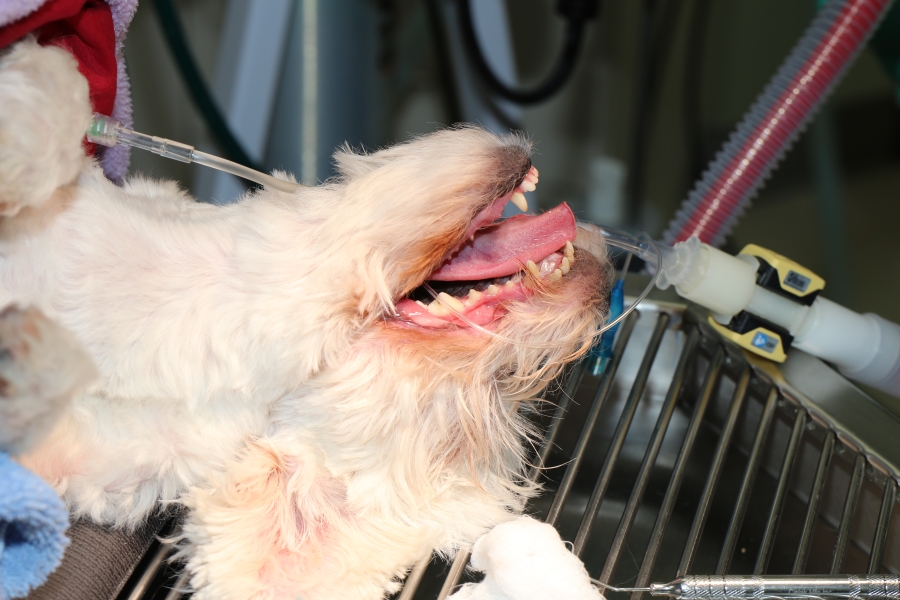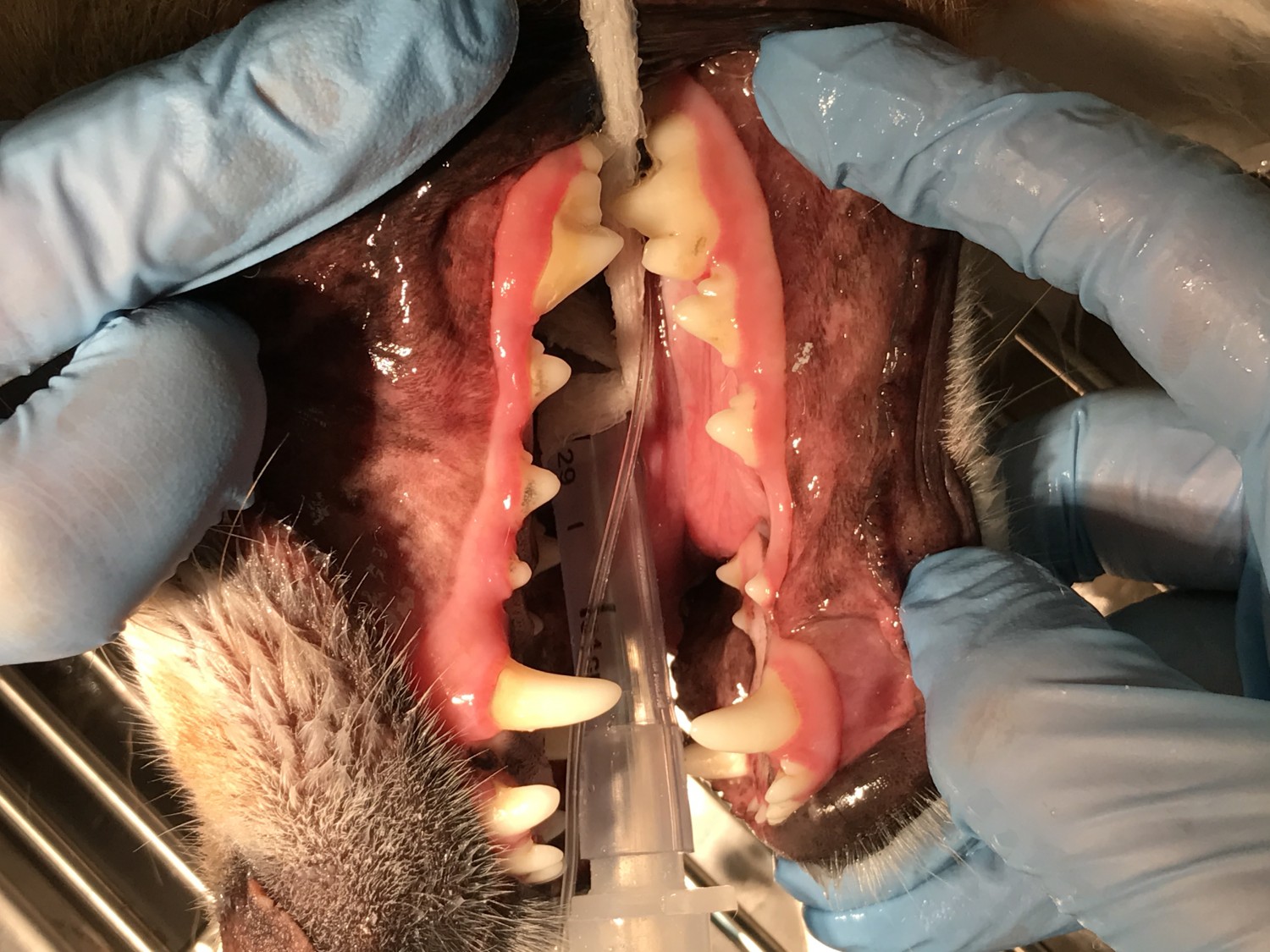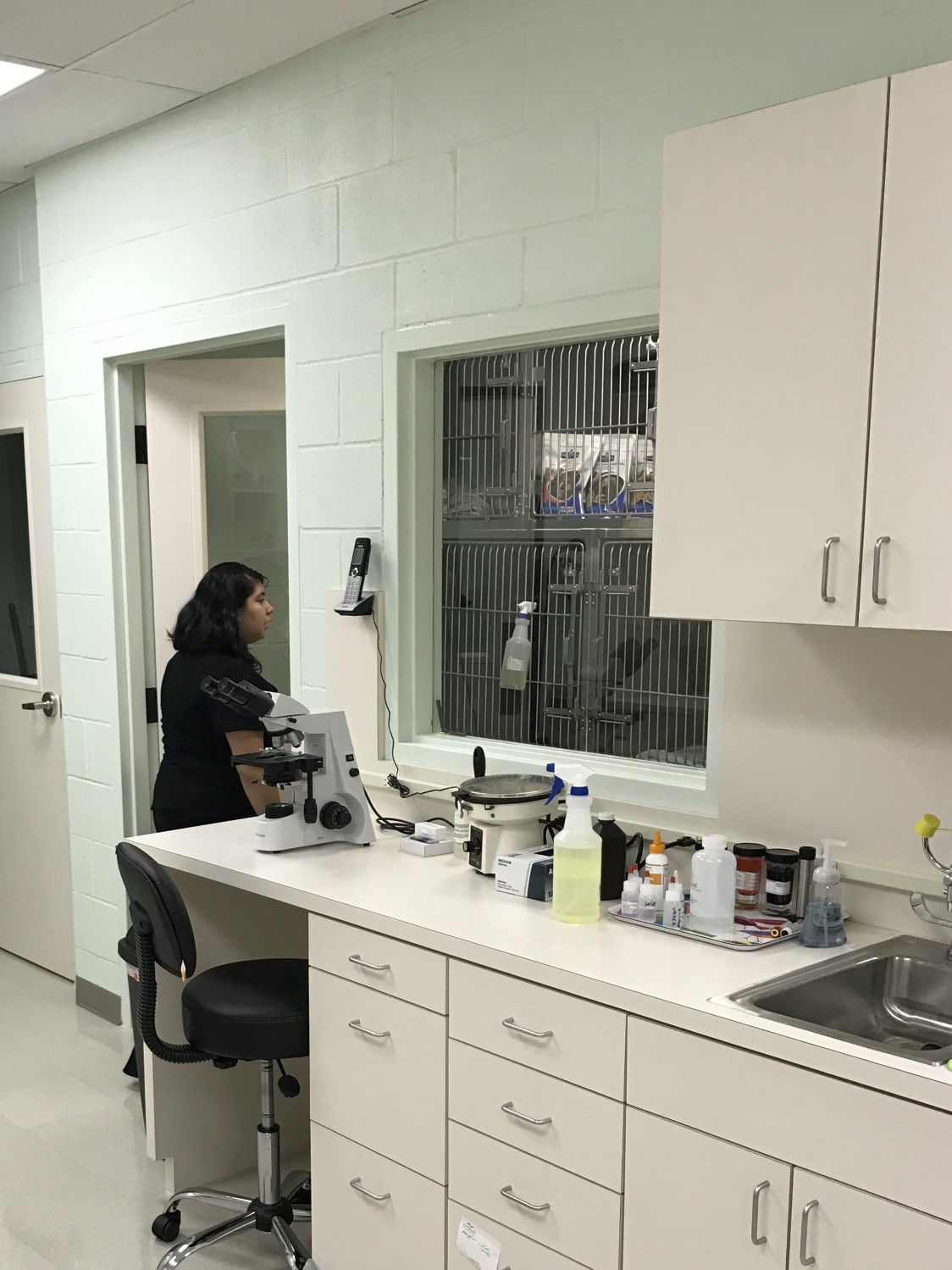|
Dental Treatment and Evaluation Process or What to Expect When Your Pet Gets a “Dental”:
Over 60% of dogs age 2 years and above have some degree of periodontal disease. At Falcon Pass Animal Hospital, we are well equipped to treat periodontal disease. We pride ourselves on making a difference in your pet’s oral health.
Here is what to expect on a day your dog or cat gets “Dental”, which is a complex and involved process that we also call a “Comprehensive Oral Health Assessment and Treatment”.
1. No food should be given after midnight. It’s OK to leave water out. While we do not want our anesthetized patients to aspirate stomach contents into the lungs in the unlikely event of vomiting under anesthesia, we also do not want them to develop extra anxiety and discomfort due to changes in daily routine and lack of water.
2. Drop off your pet around 7:30am, the exact time will be specified in advance. The pick-up time will be scheduled between 4pm and 6pm.
3. Brief physical examination will be performed to make sure it is safe to proceed with anesthesia.
4. Blood work will be performed if it was not done recently. We require every pet to have internal organ function and blood count assessed prior to anesthesia.
5. Pre-anesthetic medications will be administered. Those are sedatives and pain control medications. We tailor our pre-anesthetic plan to the needs of each and individual patient. The use of pre-anesthetic medications allows us to reduce and prevent pain and anxiety, and it also reduces the amount of anesthetic gases that we administer during anesthesia. Pre-anesthetic medications make anesthesia safer and recovery much smother.
|
6. Intravenous catheter will be placed. It allows for easy vein access for administration of anesthesia and, if needed, emergency drugs. We also continuously administer IV fluids for heart and kidney support, and to help flush anesthetics from the body. Again, that makes anesthesia safer.
|
 |
|
7. Induction of anesthesia is a brief next step, during which your pet falls asleep and breathing endotracheal tube is inserted into the trachea. The anesthesia will be delivered via this tube, and the lungs will be protected by it from all the debris that develop during the teeth cleaning process. During the procedure vital signs are closely monitored and recorded by a dedicated anesthesia assistant.
|
 |
8. Next step is Comprehensives Oral Health Evaluation and Treatment. Several events happen during this stage. A team consisting of a Veterinary Nurse and a Veterinarian removes plaque and tartar from entire tooth surface of every tooth, including all hidden spots. We use ultrasonic scaler and hand scalers to ensure all dental calculus is removed. The teeth surfaces then polished to remove any irregularities to reduce plaque accumulation in a future.
 |
 |
Thorough evaluation of each tooth, gum tissue, tongue, lining of the mouth, tonsils, jaw bone, jaw joints, salivary glands, and lymph nodes is performed next. If abnormalities are found, we call you and discuss further treatment plan. Full mouth x-rays are highly recommended to not only evaluate problem areas of the mouth, but make sure there are no hidden issues below the gum line. Our facility is well equipped to provide dental x-rays, medical and surgical periodontal disease treatment, as well as oral surgery and surgical extractions. Every extraction we perform is evaluated with dental x-rays before and after tooth removal to ensure complete tooth extraction. Gum tissue is closed above the extraction site with sutures to ensure it heals fast and in the right way.

9. After the procedure your pet will recover in a well-supervised quiet area and will go home in the evening. If needed, medications will be prescribed to continue periodontal disease treatment at home.
10. Removal of bacterial plaque and dental calculus from the mouth of your pet is a first step in a way to recovery from periodontal disease. Due to its nature, plaque will start forming instantly after we clean teeth. It is extremely important to continue excellent oral home care to reduce bacterial plaque formation and accumulation of dental tartar. It is the best way to prevent periodontal disease.
Please do not hesitate to reach us if you have any questions or concerns.
|